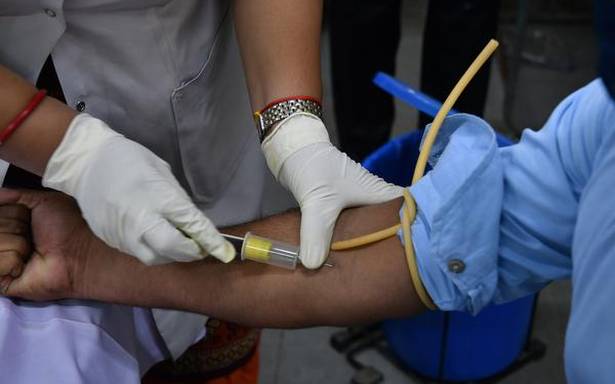States with lowest fatalities are also those with lowest fresh cases, says ICMR survey.
More than double-vaccination against COVID-19, a seroprevalence above 70% combined with at least half the adult population getting at least one shot of a vaccine is strongly linked to a low caseload as well as death rate. These are the inferences from publicly available data on State-mortality and vaccination trends as well as results from a recently conducted serology survey from the Indian Council of Medical Research (ICMR).
With over 50.5 crore doses of vaccine administered until Saturday and the Centre’s stated target to inoculate all Indians by the year end, the broad principle is that double vaccinating the population as quickly as possible ought to be the priority.
Also read | A serosurvey template for the whole of India
However, data from 21 States which were part of the ICMR’s serology survey, suggest that States with the lowest death counts, or those with less than 10 daily deaths, are also those with the lowest number of cases being added everyday. These are Madhya Pradesh, Rajasthan, Bihar, Gujarat, Uttarakhand and Uttar Pradesh. Of these U.P., M.P. and Bihar have double-vaccinated less than 10% of their eligible population, with the others ranging from 13%-20%.
On the other hand, Himachal Pradesh (HP) and Kerala, two States with the highest rates of double vaccination — 24.6% and 22% respectively — are seeing an increasing trend in cases. Himachal Pradesh is adding 150-200 cases a day since July while Kerala is on a runaway expansion of 11,000-20,000 cases a day. Population wise, Kerala has the lowest seroprevalence, or those with SARS-CoV-2 antibodies, of 44% and HP at 62% which is below the national average of 67%.
HP also has the maximum proportion of population of 75% inoculated with one dose. But several States that have managed to inoculate at least half their population with at least one dose are still seeing a significant number of cases added each day.
Explained | Are States under-reporting COVID-19 cases?
Karnataka for instance has 53.6% who got at least one dose and is still adding around 1,700 cases a day. This, however, is on a declining trend with nearly 3,500 cases being added in July. Deaths have fallen from nearly 100 a day last month to about 30 a day as of the first week of August.
Telangana, also having vaccinated 52.5% of the population with one dose is seeing less than seven deaths a day but nearly 600 cases are being added everyday, again a decline from about 1,000 from a month ago.
Getting closer to the 50% population mark improves daily case loads — Assam has 43% with one dose and Haryana 49% and both are seeing less than 30 deaths a day for over a month. The north-eastern State is adding 1,048 cases a day.
Also read | Fathoming serosurvey data, with caution
However, high seroprevalence on its own isn’t an influential factor, as seen in West Bengal and Jharkhand. Both have over 60% seroprevalence and a similar fraction — 30% — with at least one dose. But West Bengal is adding nearly 700 cases everyday to Jharkhand’s 28. The former is adding 10 deaths a day and the latter is reporting zero deaths.
The case of U.P.
But Uttar Pradesh — India’s most populous state — with 71% seroprevalence and only 29% with at least one dose is reporting less than 50 cases a day and less than 10 deaths.
“One way to look at it is that high seroprevalence with one shot of vaccine is equivalent to two doses of vaccine and that could explain the protectivity in these high prevalence States,” said Chandrakant Lahariya, epidemiologist and public health expert. “But U.P., M.P. and Bihar have also a substantial number of under-reported cases as the seroprevalence surveys and excess death counts reveal.”
Though the quality of medical statistics varies widely among States, the number showed that the Centre and States ought to be working together to have different vaccination strategies for different States, Dr Lahariya said.
Also read | Two-thirds of Indians have antibodies, shows ICMR survey
“States like Kerala with low seroprevalence should be given more vaccines as opposed to those with high seroprevalence. So far the evidence is that only the m-RNA vaccines, none of which are used here, have some role in reducing transmission,” he said.
He also cautioned that the Delta variant being the dominant variant in India had affected a large fraction of the country, and so several States with high seroprevalence weren’t necessarily protected in case of newer emerging variants.
Source: Read Full Article

